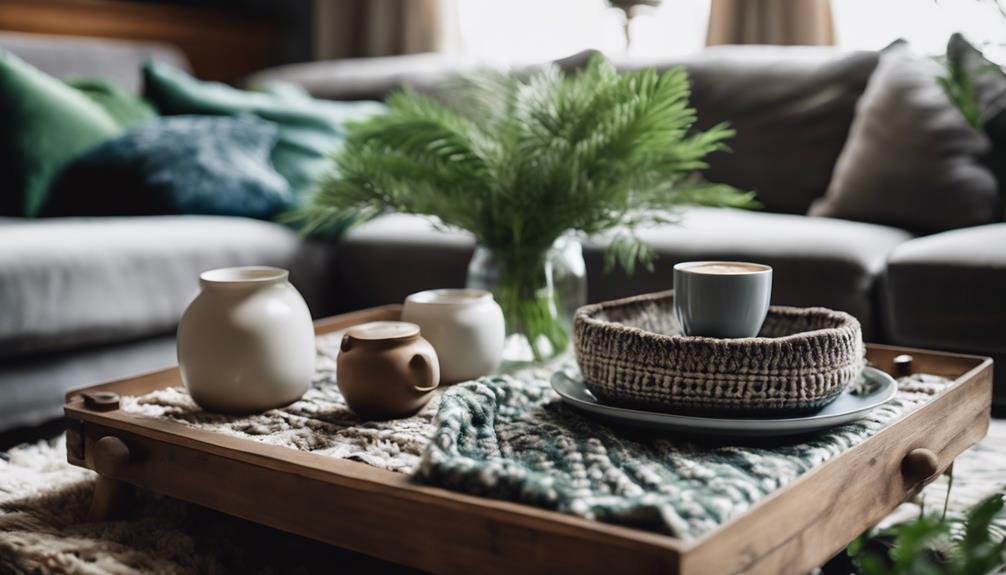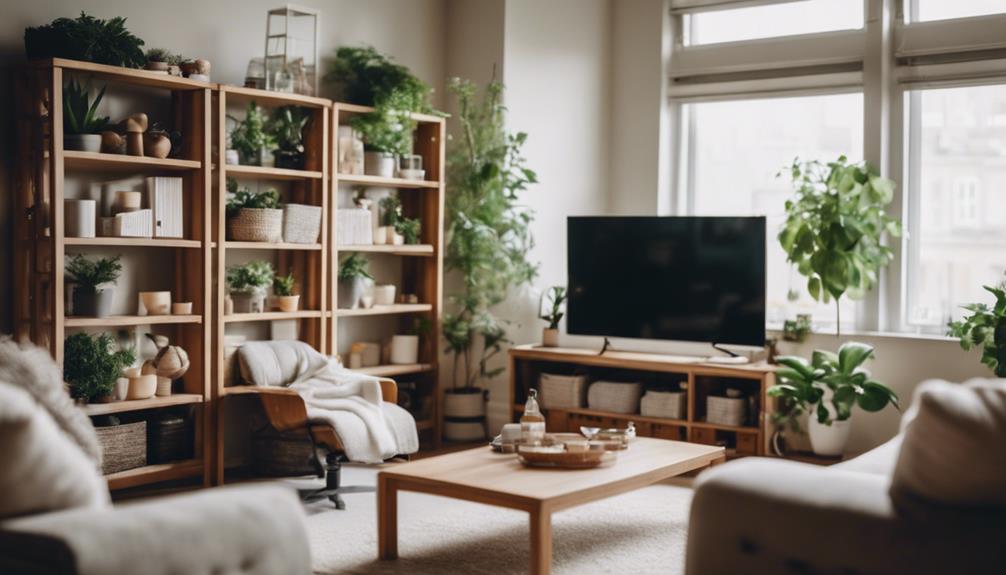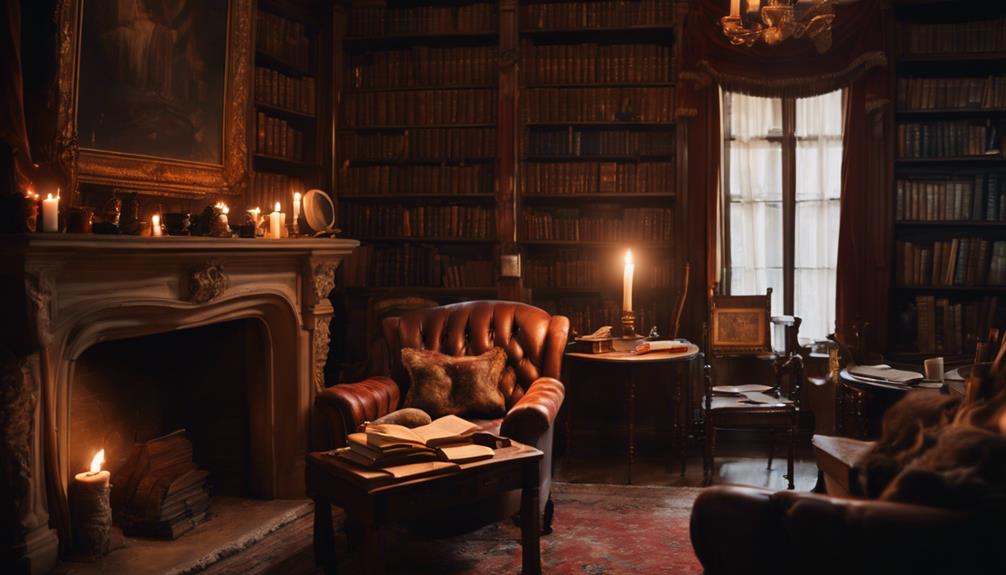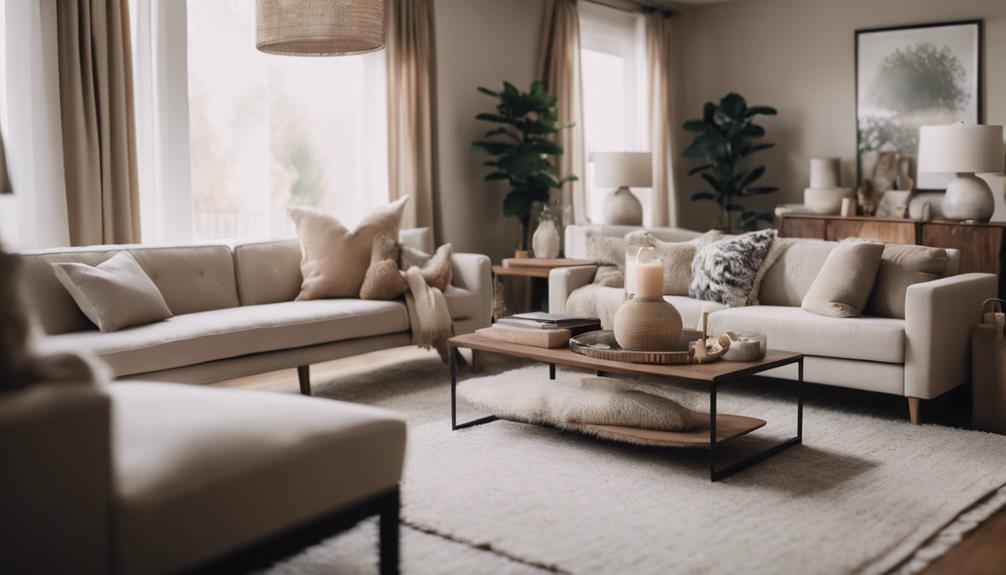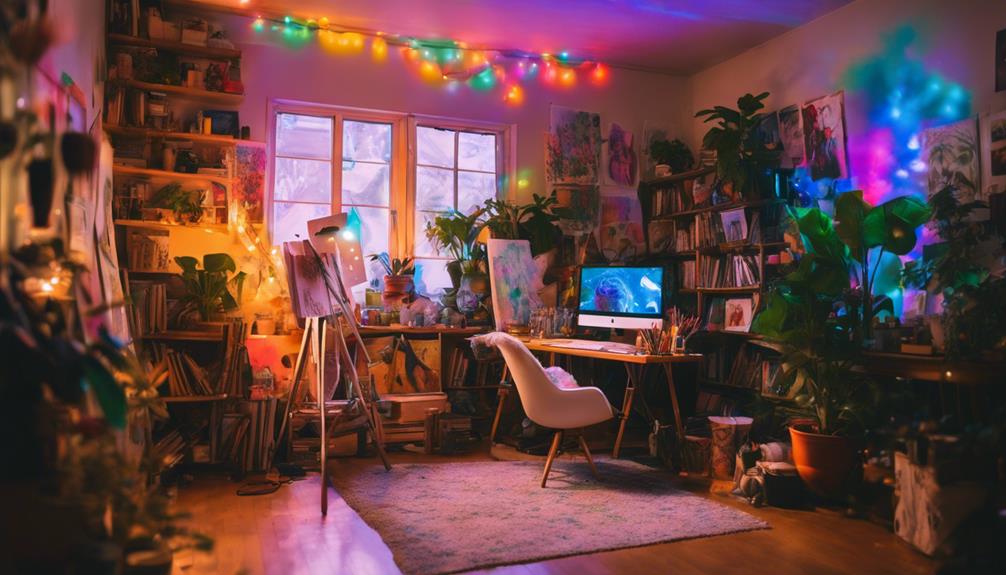You can instantly elevate any room's visual appeal by mixing textures and layering them thoughtfully. Start by combining soft fabrics, like plush rugs, with hard surfaces, such as a sleek leather sofa. Incorporate natural materials, like wood and stone, to add warmth and character. Thoughtful use of lighting can enhance the textures, creating a cozy atmosphere. Pay attention to color interactions, ensuring they complement one another for a harmonious design. By avoiding common mistakes, like overwhelming with too many layers, you'll create depth that invites exploration. Keep following these tips to discover more ways to enhance your space!
Key Takeaways
- Layer various textures, such as plush rugs with sleek furniture, to create visual interest and depth in your space.
- Incorporate natural materials like stone and wood for warmth and a connection to nature, enhancing the room's ambiance.
- Use a thoughtful color palette that complements textures, ensuring harmony and influencing the overall mood of the room.
- Introduce accent pieces, like decorative pillows and throws, to add additional layers and textures that invite engagement.
Importance of Texture in Design
Texture plays an essential role in design, transforming ordinary spaces into engaging environments that captivate the senses. When you incorporate texture in interior design, you instantly add depth and visual interest to your rooms. Different textures, like smooth fabrics or rough woods, can create an intriguing contrast that draws the eye and encourages exploration.
Using various materials and textures not only enhances the aesthetic appeal but also helps define a room's style and mood. For instance, fluted paneling or scalloped designs can bring depth to walls, making them focal points that elevate the overall ambiance. By strategically layering textures, you create visual harmony that unifies diverse decor elements, making your space feel cohesive and inviting.
Moreover, textures influence emotional responses; soft textiles can evoke comfort, while sleek surfaces may inspire modernity. By understanding the importance of texture, you can craft an atmosphere that reflects your personal style and enhances your living experience. Remember, it's not just about the colors you choose, but how those colors interact through different textures that truly brings your design to life.
Understanding Texture Characteristics
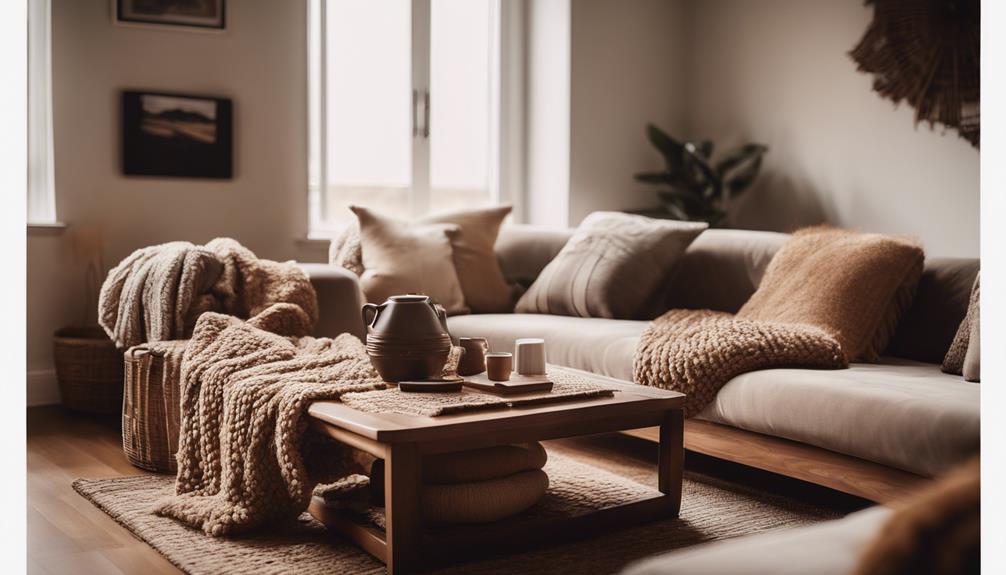
By grasping the various characteristics of texture, you can enhance your design choices and create more engaging spaces. Understanding how different textures interact will help you add depth and visual interest to your interiors.
Here are some key points to reflect on:
- Tactile vs. Visual: Tactile textures, like fabrics and wood, engage the senses, while visual textures, such as patterns, create illusions of depth.
- Natural vs. Synthetic: Natural textures, like stone and plants, bring warmth, whereas synthetic textures, like plastic and vinyl, offer a modern vibe.
- Mixing Textures: Combining different textures, such as soft fabrics with hard surfaces, generates visual contrast and balance.
- Influencing Space Perception: Rough textures can add visual weight, making a space feel cozier, while smooth textures promote a sense of openness.
Techniques for Layering Textures
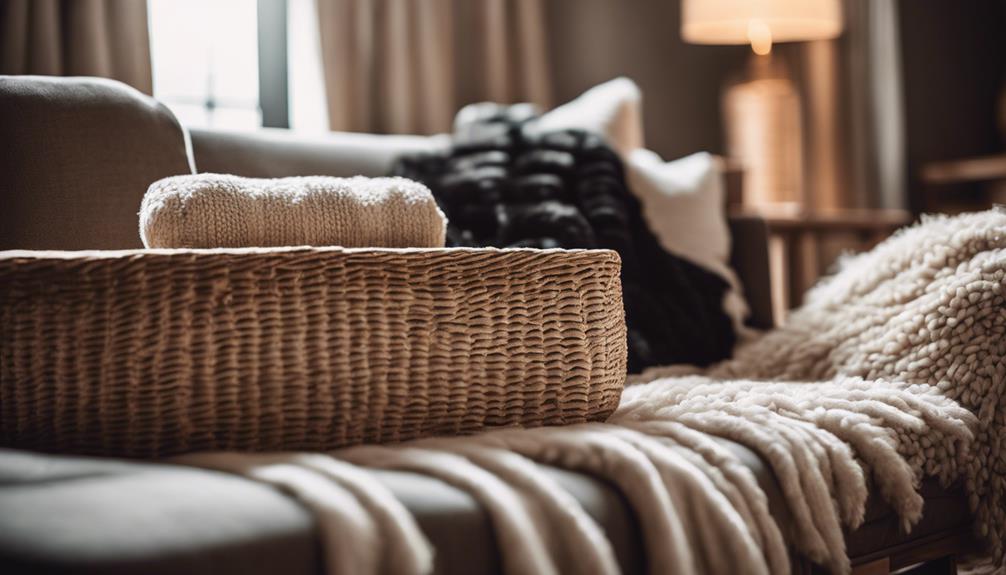
Combining various textures can transform a room, adding depth and inviting tactile exploration. To achieve a rich and engaging atmosphere, focus on layering textures throughout your home decor. For instance, juxtapose plush rugs with sleek leather furniture. This combination creates visual interest while enhancing the tactile experience.
You can also mix materials, like a velvet sofa paired with a woven jute rug, to introduce depth and dimension. This not only adds character to your space but also engages the viewer's curiosity.
Don't shy away from contrast textures; polished wood surfaces alongside soft textiles establish a cozy ambiance that invites interaction. Accent pieces play an essential role in this layering process. Decorative pillows and throws can introduce additional textures and layers, making your design feel more dynamic and inviting.
Regularly assess how these layered textures interact with each other to guarantee a balanced and harmonious look. By thoughtfully incorporating various textures, you'll create a room that's not only visually appealing but also a delight to experience.
Embrace the art of layering textures, and watch your space come alive!
Common Mistakes in Texture Application
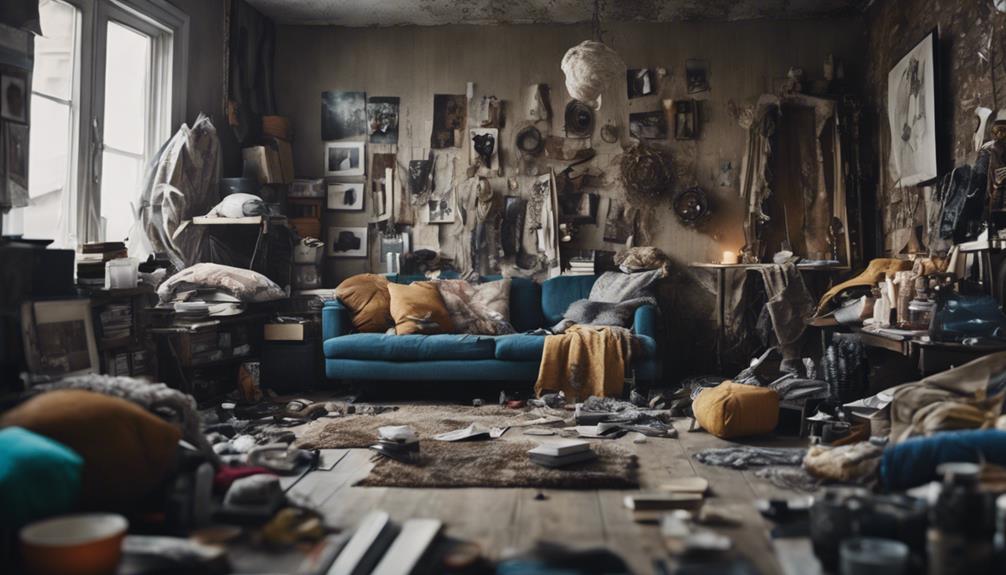
When you're working with texture, it's easy to make a few common mistakes that can throw off your design.
Overlooking scale and color interactions or ignoring layering techniques can lead to a space that feels unbalanced or flat.
Let's explore these pitfalls so you can create a more inviting and cohesive atmosphere.
Scale and Proportion Issues
Failing to contemplate scale and proportion in texture application can easily overwhelm a space, making large textures dominate while smaller ones fade into the background. This imbalance disrupts the visual harmony you aim to achieve.
To help you avoid common pitfalls, consider these key tips:
- Mix large and small textures: Create interest by pairing oversized materials with delicate ones.
- Hang artwork at eye level: This guarantees that your pieces connect with the space, enhancing the overall design.
- Layer textures thoughtfully: Use various materials to add dimension and depth, making your space inviting.
- Create a focal point: A bold texture can serve as a centerpiece without overshadowing other elements.
Overlooking Color Interactions
Overlooking how textures interact with colors can create a disjointed aesthetic that disrupts your room's harmony.
When you're adding texture, it's essential to take into account how it interacts with your color palette. Clashing prints or textures can overwhelm a space, resulting in visual chaos instead of balance. Pay attention to the visual weight of each element; large, bold textures can overpower smaller furnishings, while delicate textures may get lost in expansive areas.
The interaction between texture and color also influences the warmth or coolness of a room, impacting its overall ambiance. For instance, pairing soft, warm textures with warm colors can create a cozy environment, while cool textures alongside cooler tones might evoke a more modern feel.
Regularly evaluating how new interior textures complement or contrast with existing colors helps to enhance your design scheme. This attention to detail not only prevents common pitfalls but also helps create visual interest and dimension to a room.
Ignoring Layering Techniques
Ignoring layering techniques flattens your space, stripping it of the depth and richness that textured elements can bring. Layering is essential for creating visual interest and achieving a cohesive look in your room. Without it, your design can feel monotonous and uninviting.
Here are some common mistakes you might want to avoid:
- Neglecting Scale: Large textures in small spaces can overwhelm, while small textures in large areas may get lost.
- Mixing Textures: Failing to combine different types of textures, like plush fabrics with hard surfaces, leads to a dull environment.
- Overlooking Color Interactions: Regularly assess how your textures interact with colors to maintain harmony and balance.
- Skipping Layers: Each layer of texture adds character; ignoring this can result in a flat design.
Incorporating Natural Elements
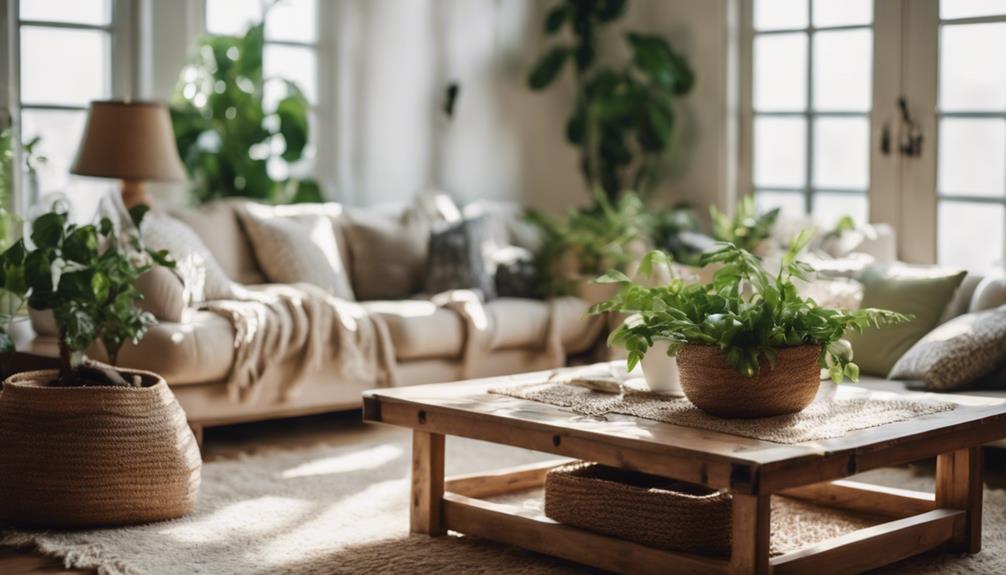
Incorporating natural elements can transform your space by adding warmth and visual interest.
You can enhance the room's texture through thoughtful plant selection, as well as integrating materials like stone and wood.
Let's explore how these elements bring life and charm to your interiors.
Benefits of Natural Textures
When you embrace natural textures like wood and stone, you not only enhance the room's aesthetic but also foster a more sustainable and inviting atmosphere. These materials can transform your space, creating a warm, welcoming environment that feels alive.
Here are some benefits of incorporating natural textures into your home:
- Eco-friendly: Natural materials reduce your carbon footprint, promoting sustainability in design.
- Depth: Textures like rough stone and smooth wood add layers to your decor, creating visual interest.
- Inviting: The warmth of natural textures makes spaces feel more comfortable and connected to nature.
- Visual interest: Mixing different textures enhances the tactile experience and keeps the eye engaged.
Plant Selection Tips
Selecting the right plants can elevate your space by adding vibrant textures and enhancing your home's atmosphere. Incorporating plants like ferns and snake plants not only adds visual texture but also improves indoor air quality, making your home feel fresher and more inviting.
To achieve a dynamic and layered look, choose plants with varying heights and leaf shapes. For example, pair tall dracaenas with low-growing succulents for an engaging arrangement.
Don't forget about decorative pots! Opt for interesting textures such as woven baskets or ceramic finishes to further enhance the visual appeal of your plant setups.
Consider the growth habits of your plants too. Trailing varieties like pothos can soften edges and create a flowing feel when placed on shelves or in hanging planters. This adds depth while maintaining a cozy vibe.
Integrating Stone and Wood
Natural elements like stone and wood can beautifully complement the vibrant textures of plants, creating a harmonious and inviting atmosphere in any room. By thoughtfully integrating these materials, you'll effortlessly add texture and warmth to your space.
Here are some ways to achieve that:
- Feature Walls: Use stone for a stunning accent wall that adds rugged contrast and visual interest.
- Wood Flooring: Choose rustic wood floors to bring an earthy charm and a sense of comfort.
- Mixed Finishes: Combine matte and polished wood surfaces with natural stone for a dynamic interplay of textures.
- Furniture Choices: Incorporate wooden furniture pieces that echo the natural elements, enhancing the overall design and warmth.
The Role of Lighting
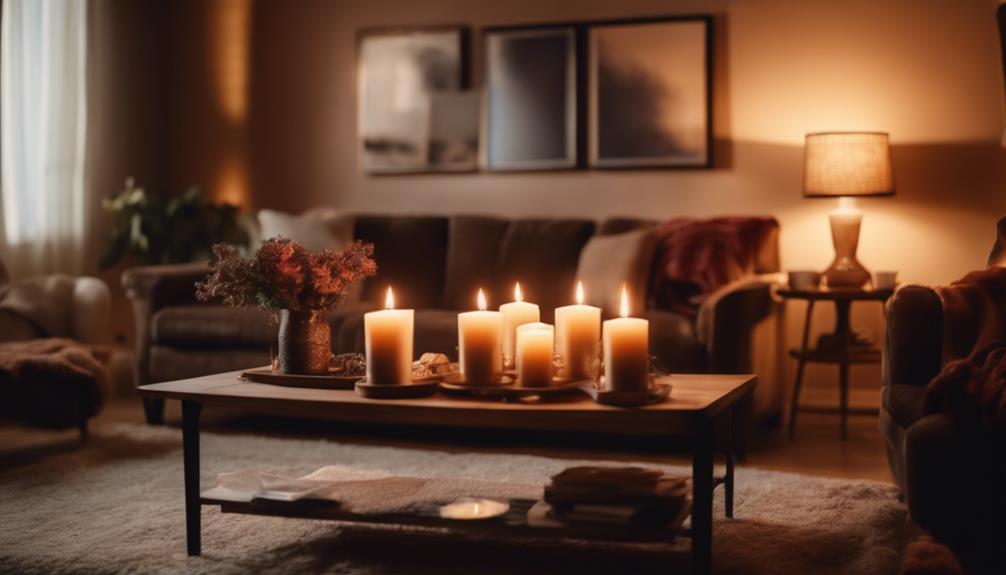
Lighting considerably influences how textures are perceived in any room, enhancing visual interest and depth. By strategically combining various lighting types, you can create an inviting ambiance that makes textures pop. Here's a quick overview of how different lighting choices can affect your space:
| Lighting Type | Effect on Textures |
|---|---|
| Ambient | Provides overall illumination, revealing the base texture of surfaces. |
| Task | Highlights specific areas, drawing attention to intricate details. |
| Accent | Creates focal points, emphasizing unique textures and dimensions. |
| Decorative | Adds character and can introduce new textures through light fixtures. |
Using warm lighting can transform the depth of textured walls or furnishings, making your space feel cozier and more welcoming. Experimenting with different bulb types, such as warm versus cool, can drastically alter how textures are perceived, impacting the overall mood. When you pay attention to lighting, you not only enhance the visual interest in your room but also create an atmosphere that invites relaxation and enjoyment.
Selecting the Right Color Palette
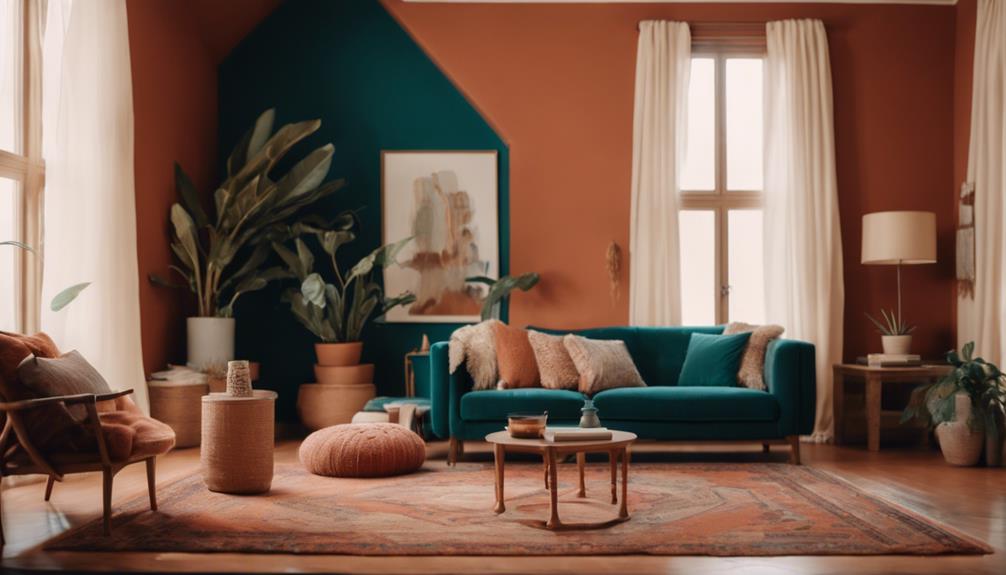
Choosing the right color palette can greatly enhance how textures are perceived in your space, working hand-in-hand with the lighting to create a cohesive and inviting atmosphere.
When selecting your color palette, consider the following tips:
- Light colors like soft whites and pastels can make a room feel more open, perfect for smaller areas.
- Neutral tones reflect light and create an airy backdrop for your design elements.
- Richly-pigmented tones, such as deep blues or burgundies, add sophistication and a cozy vibe, highlighting the textures in the room.
- Verify your chosen colors complement existing furnishings to maintain a harmonious visual flow throughout the space.
Enhancing Visual Weight and Balance
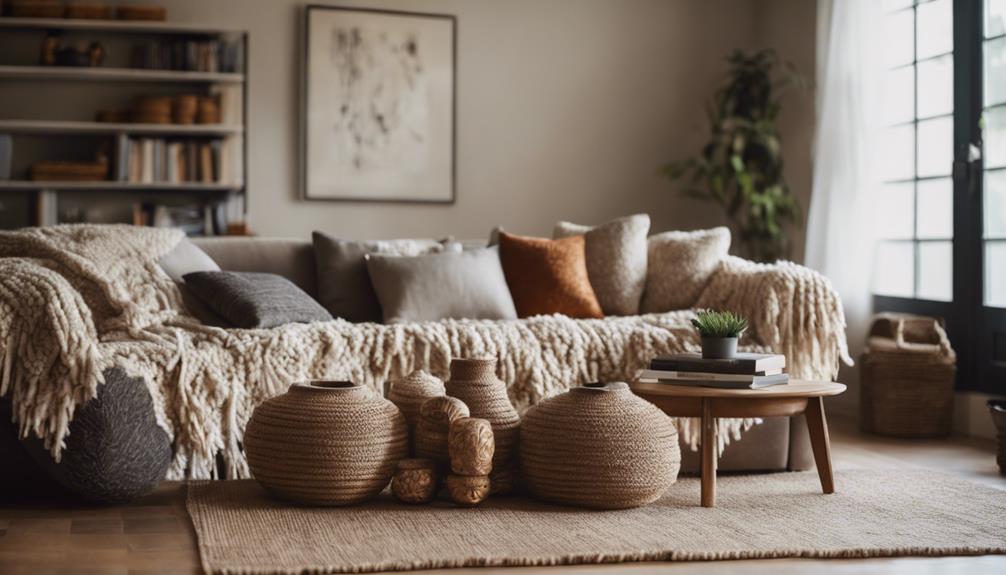
Textures play an essential role in enhancing visual weight and balance in your space, making furniture and decor feel more anchored and cohesive. By incorporating different materials and textures, you can create an inviting environment that feels well-proportioned. Textured walls, for instance, add visual weight, helping to ground your design.
When you mix smooth surfaces with rough elements, you enhance visual interest and create a dynamic flow throughout the room. This strategy not only makes your space more engaging but also aids in balancing a room, ensuring that no single element overwhelms the overall aesthetic.
Here's a quick reference to help you understand how to use textures effectively:
| Texture Type | Effect on Space |
|---|---|
| Textured Wall | Adds visual weight, anchors decor |
| Smooth Surfaces | Creates contrast, enhances balance |
| Rough Elements | Adds depth, enhances visual interest |
Resources for Learning and Inspiration
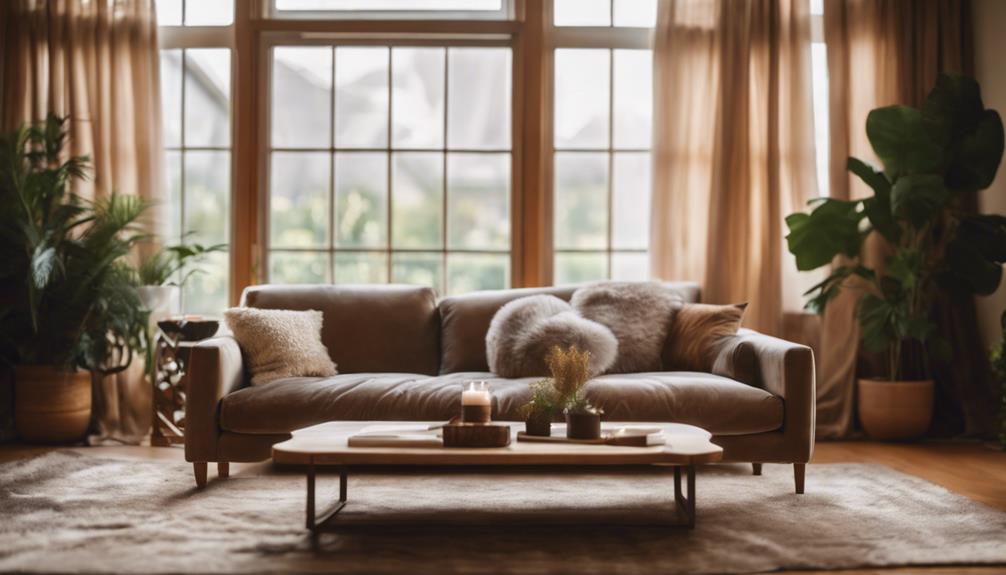
To further enhance your understanding of how to effectively incorporate textures into your space, exploring various resources can provide valuable insights and inspiration. By tapping into these engaging platforms, you'll discover new ways to elevate your interior design projects and make informed choices about texture.
Here are some helpful resources to reflect on:
- Design Podcasts: Tune into engaging design podcasts that offer practical decorating tips on texture integration.
- Community Forums: Join online forums and social media groups to share experiences and gather feedback on texture applications.
- Interior Design Blogs: Follow blogs dedicated to interior design for visual examples and practical tips on texture usage.
- Workshops and Classes: Participate in workshops or classes that deepen your understanding of texture's role in creating inviting spaces.
Frequently Asked Questions
How Can Texture Add Depth and Interest to a Design?
Texture adds depth and interest to your design by creating contrasts that engage the eye. By layering different materials, mixing soft and hard surfaces, you'll create visual intrigue that makes your space feel inviting and cohesive.
What Does It Mean to Add Texture to a Room?
Adding texture to a room means incorporating various materials and surfaces, engaging your senses. You'll create a more inviting atmosphere by mixing tactile and visual elements, enhancing both depth and warmth in your space.
What Does Texture Visually Add to a Room?
Texture visually breathes life into your room, transforming bland surfaces into enchanting landscapes. It's not just about looks; it's the magic that creates warmth, contrasts, and a cozy atmosphere, making your space feel inviting and alive.
What Is an Example of Texture in Interior Design?
An example of texture in interior design is using natural fibers like jute rugs. They add warmth and a tactile quality, making your space feel cozier while enhancing the overall aesthetic with their unique look.
Conclusion
Incorporating texture into your space can truly transform its atmosphere. Did you know that rooms with varied textures can feel up to 20% more inviting?
By layering different materials, playing with lighting, and carefully selecting your color palette, you can create a mesmerizing environment that draws people in.
So, don't shy away from experimenting with texture—your space deserves that extra depth and interest! Start today, and watch your room come to life!
